Catalpa is a rather small plant of ornamental type. It is distinguished by wide spreading branches, which have an interesting spherical shape. From the photo and descriptions, planting and caring for the catalpa tree is quite simple.
Content
What is a catalpa tree?
This ornamental plant is an excellent decoration for the site near the house or cottage. Thanks to its beautifully decorated crowns, Catalpa will become a real decoration for your living area.
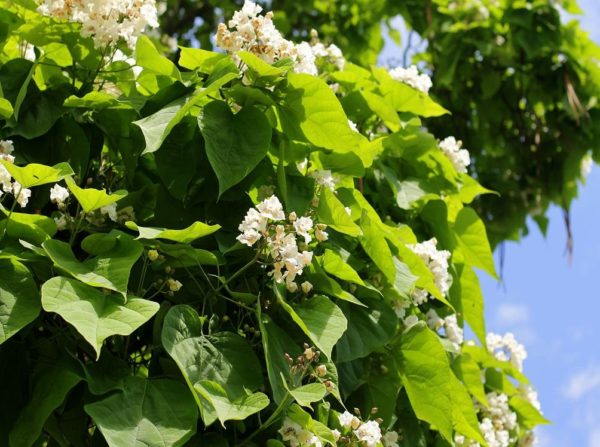
In addition, the plant blooms in a bizarre manner, and in addition to the lush growing tree, the gardener receives an ornamental plant, the crown of which is decorated with exquisite buds.
Among other things, catalpa is popular for decorating fairly wide and large-scale territories, including shopping centers or government buildings.
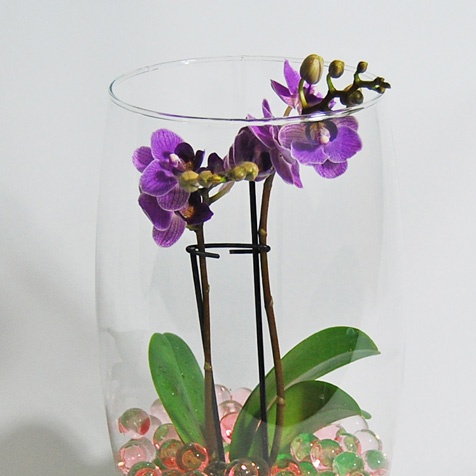 You may be interested in:
You may be interested in:Many beginner gardeners, for the first time seeing a catalpa, believe that only professionals can grow such a plant. However, not only that getting such a tree is not something problematic, but the method of growing it is quite simple and not as energy-intensive as it seems initially.
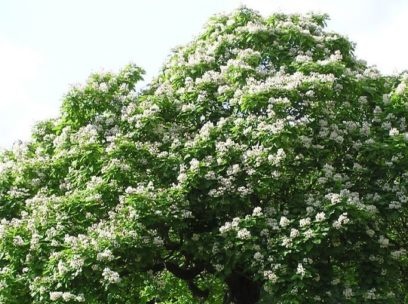 In addition, the plant is not only unpretentious in maintenance, but also well takes root in a new place, adapts to new conditions and feels great when planting in open ground. If climatic conditions change very quickly, then the tree quickly gets used to and blooms even in the face of frequent severe weather changes.
In addition, the plant is not only unpretentious in maintenance, but also well takes root in a new place, adapts to new conditions and feels great when planting in open ground. If climatic conditions change very quickly, then the tree quickly gets used to and blooms even in the face of frequent severe weather changes.
In addition to territories that are located near any buildings or structures, catalpa is planted in gardens, it is customary to plant it in alleys or in city parks.
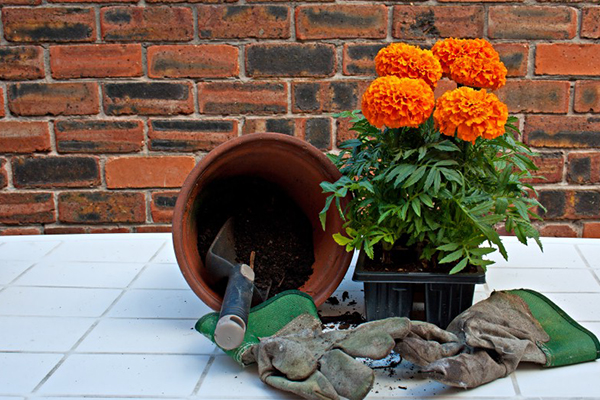 You may be interested in:
You may be interested in:There are two varieties of this plant:
- stunted trees;
- broadleaf shrubs.
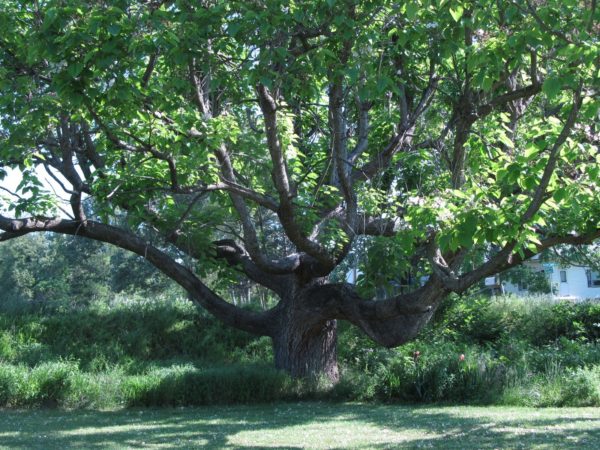
These trees have a wide and rather voluminous crown, as well as large leaves of a light green hue, which help the tree look very fresh. In the lower part of the plant has glossy leaves that take predominantly heart-shaped or ovoid shape. In width, they can reach 15 centimeters.
How catalpa blooms
The catalpa tree does not require special attention to bloom.During full flowering, the plant looks very attractive. Flowers have a white or beige hue.
They themselves are quite small, but at the same time they are collected in chic brushes. Sometimes flowers can be lilac. It all depends on the variety selected for planting.
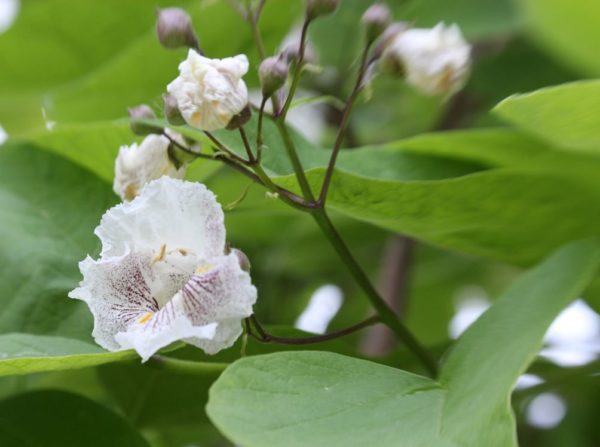
The fruits of the catalpa tree are small oblong narrow pods in which the seeds of the plant are stored. As a rule, they can sag on the plant until the next warming, and in winter give the tree a very original appearance.
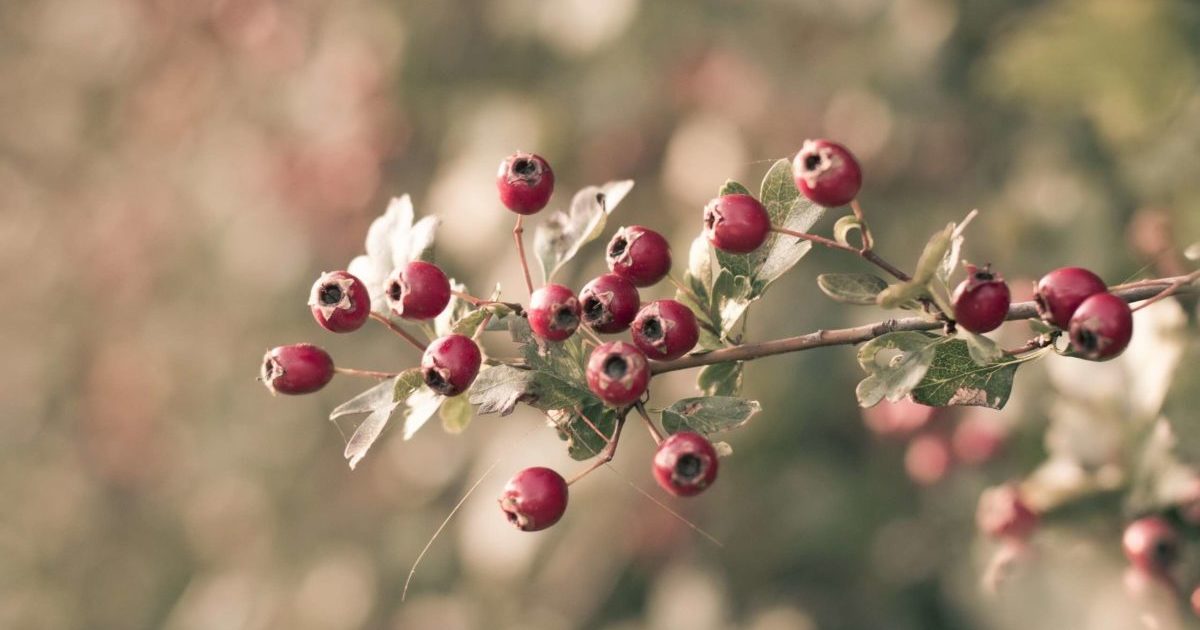 You may be interested in:
You may be interested in:For this reason, the tree has another name - pasta, because in winter, as a rule, foliage falls, and only these fruit-seed boxes remain on the trees.
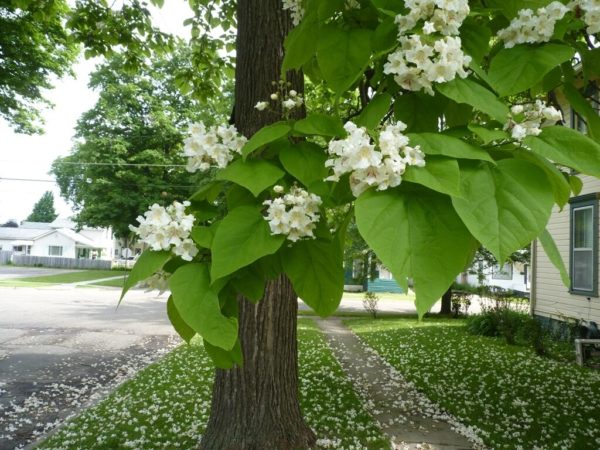
The tree feels best if it was grown from seeds that are produced in the same region. Therefore, when planting a plant, it is necessary to purchase seedlings in advance that were grown in the same strip and in the same climatic conditions in which the gardener is going to grow them.
How does catalpa breed
Judging by the photos and descriptions, the catalpa tree reproduces quite quickly with proper planting and care. Mostly this occurs with the help of seeds and in a vegetative way. Quite often, gardeners, after successfully growing one tree, think about buying or growing a few more.

After trying to plant a catalpa once, many come to the thought of how to grow a whole garden of these beautiful exotic trees. This can be done if you know the characteristics of the reproduction of a tree of this species. You can choose the most convenient way - use seeds, or cuttings from already grown trees.
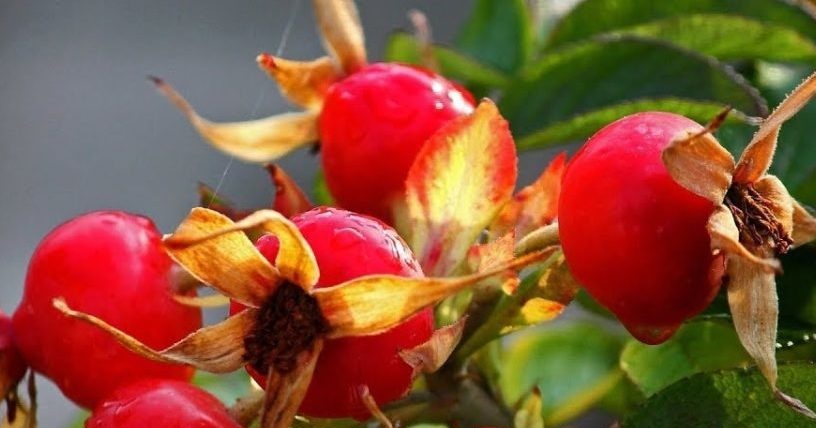 You may be interested in:
You may be interested in:Planting substrate includes such components as:
- river sand;
- a small amount of fertile soil, preferably black soil;
- peat;
- some humus or organic manure.
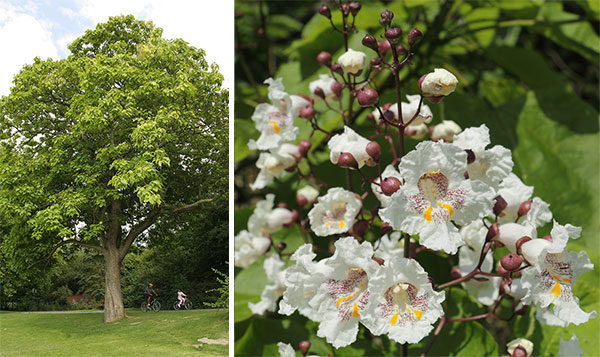
How to plant catalpa vegetatively
According to the photo and descriptions, planting a catalpa tree using a vegetative method is the most common and popular among gardeners. Since the use of cuttings immediately reduces the time for germination, gardeners choose it, however, in order for everything to go smoothly, it is necessary to properly prepare the cuttings.
You can do this in the following way:
- In the second half of summer (from about mid-July until the end of August), it is necessary to go around an already growing tree in search of young shoots that reach a length of about 15 cm.
- Take a pre-sharpened knife and carefully cut the selected shoots. Try not to harm the tree itself.
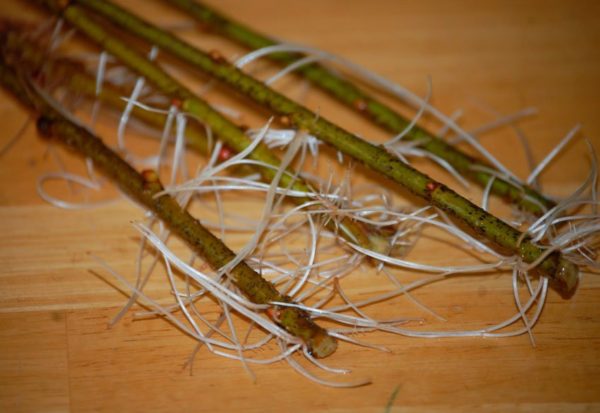
- Prepare the box and fill it with fertile soil or acquired soil, then place the stalk there.
- Cuttings should be planted in the ground by placing them in a pre-dug hole. Try to arrange the seedlings in the center of the pit and firmly strengthen them, sprinkling with earth after that. Thus, the seedlings will begin to strengthen in the ground, and the root system can begin to develop.It is not superfluous to add a little water mixed with fertilizers to the soil.
- After a small amount of time (about 2-3 days) after the seedlings begin to get used to the new place, it is necessary to add growth stimulants, as well as stimulants to strengthen the root system of the future tree.
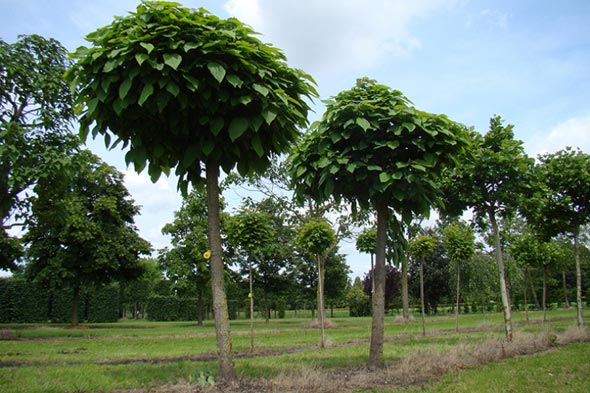
- After that, put the box with the existing seedlings in some dry and cool place. In this case, the temperature regime should be uniform (completely eliminate any differences).
- At first, it is necessary to completely eliminate the possibility of an excess of moisture in the soil.
- For the winter period, you need to take good care of the plants - strengthen the roots in the ground, and also protect them from frost. At this time, the boxes can be moved to a house or to an area where the air temperature will be maintained at about 15 degrees.
- After the cold ends and the warm weather on the street becomes stable, it will be possible to plant cuttings in the open area.
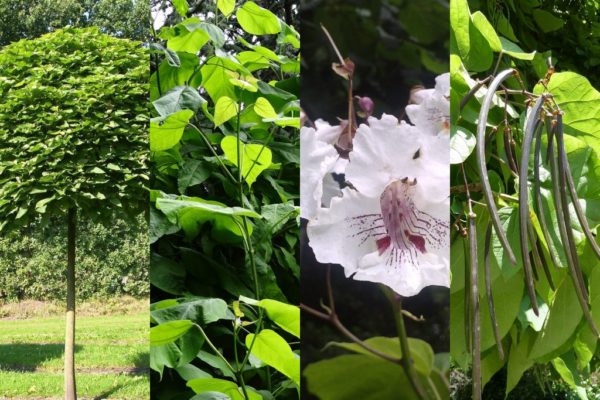
How to plant catalpa with seeds
If you decide to plant a catalpa for the first time or want to plant a tree with seeds, then use the following method:
- In autumn, when the pods are filled with seeds that have already ripened, carefully separate a few pieces from the branches and remove the finished planting material from there.
- Store seeds of a tree only in a dry and cool place. Keep in mind that the shelf life should not exceed two years. The best seed cover will be small canvas bags or similar linen containers. Thick paper can also be used.
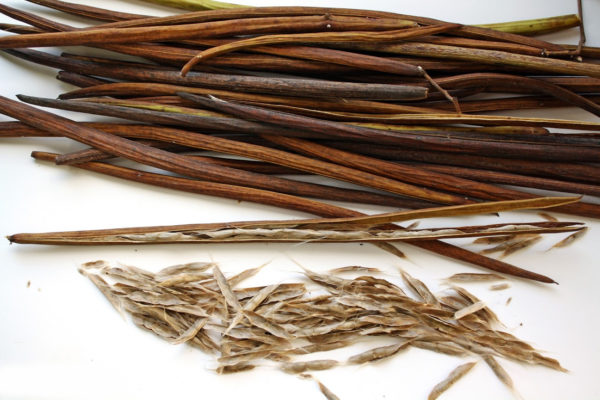
- The best time for sowing seeds is the end of February or the beginning of March. It all depends on when the cold recedes and the air warms up well. Before planting seeds, it is necessary to soak them properly in warm water and leave them in this state for 10-12 hours.
- After that, take a small wooden box and dig holes that will be at the same distance from each other. Carefully place the seeds there, preferably as close to the center as possible.
- In this case, it is necessary that the plants feel like in greenhouse conditions. For these purposes, you must first create a favorable microclimate for future plants. They will sprout much faster if the soil is properly moistened by adding mineral and organic fertilizers, and then cover with polyethylene or cellophane film.
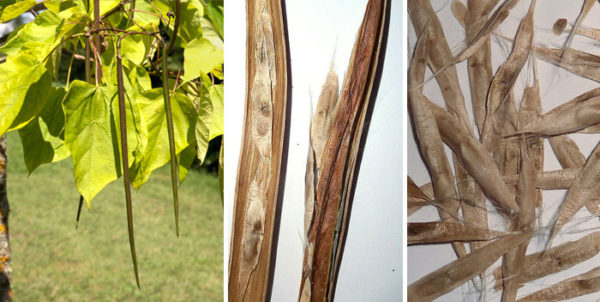
- It is necessary to store a box with future plants in a warm room where the sun's rays will have access. Irrigate the soil with seeds periodically to sprout as soon as possible. If all conditions are met, then the first sprouts will appear after three weeks or a month.
What are the features of growing catalpa tree
According to photos and descriptions, planting and caring for a catalpa tree in the Urals occurs in approximately the same way as in other regions of our country. In the Urals, at one time, the plant became especially widespread, after which it was able to adapt in the best way to more severe conditions of detention.
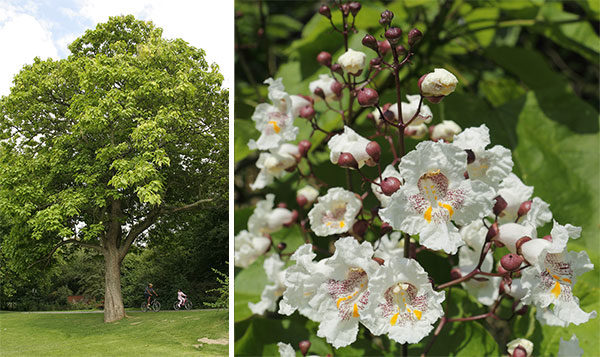
Consider the features of caring for a catalpa tree:
- once a week the plant must be carefully watered and at the same time at least two buckets of water should be poured under one tree;
- loosening the soil under the tree is also an integral part of the care, and it is necessary to carry out such manipulations in the spring, but dig no deeper than 40 centimeters;
- at the beginning of the growing process, it is necessary to equip the plant with organic fertilizers - about 5-7 buckets of manure per tree will be enough;
- young plants should be carefully covered for the winter, so that severe frosts do not ruin the young shoots;
- if some shoots have dried up or died out during the winter cold, they must be cut off in time, so that new ones grow in their place.
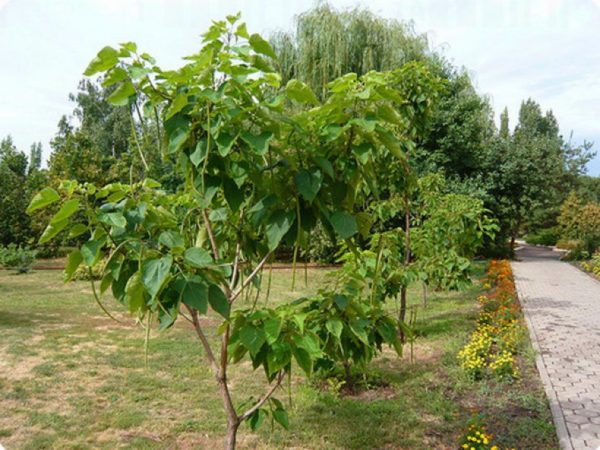
Catalpa is an interesting exotic plant that will decorate any site and create comfort in it.


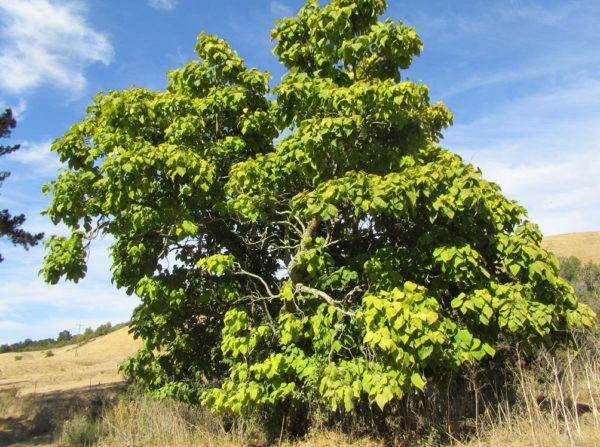
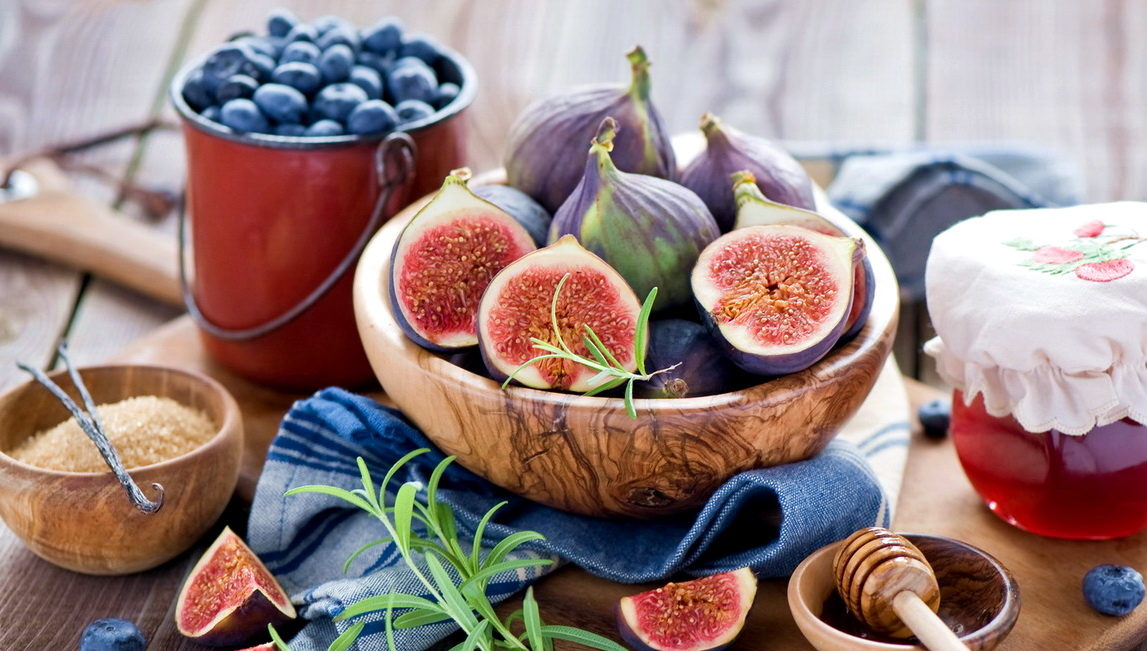
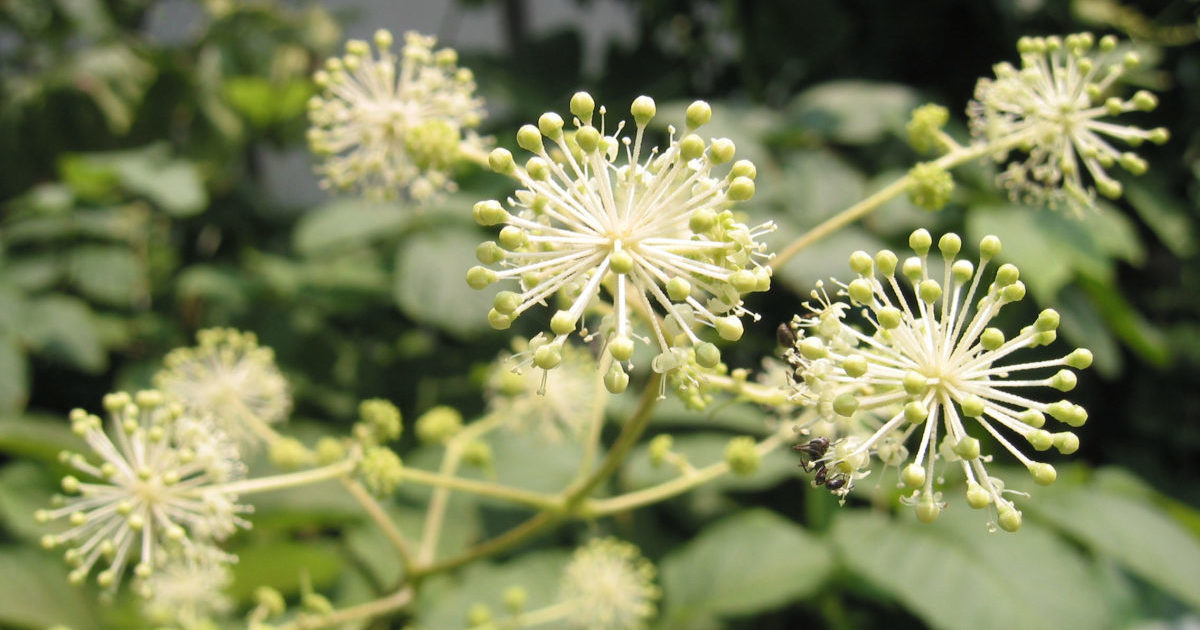 Aralia Manchurian - medicinal properties and contraindications, the use of tinctures in bodybuilding
Aralia Manchurian - medicinal properties and contraindications, the use of tinctures in bodybuilding Seedless pomegranate - cutaway appearance, benefits and harms
Seedless pomegranate - cutaway appearance, benefits and harms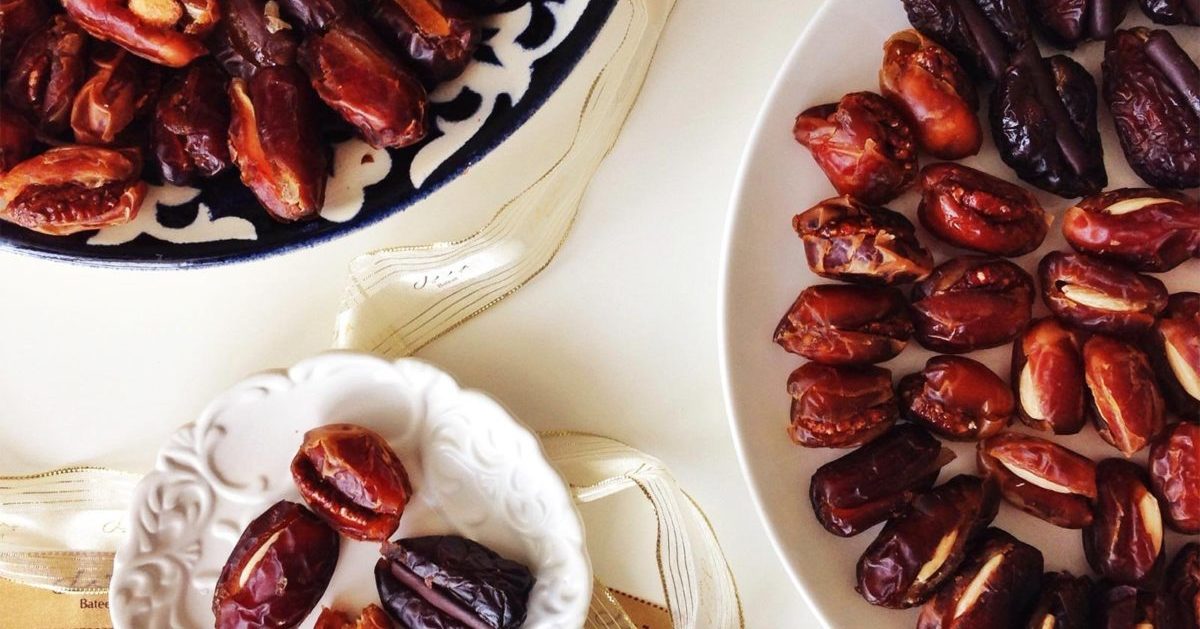 Dates - the benefits and harm to the body, how much you need to eat, properties and calorie content
Dates - the benefits and harm to the body, how much you need to eat, properties and calorie content The benefits and harms of mango for the body of women and men - how to eat it?
The benefits and harms of mango for the body of women and men - how to eat it?
Stroitelstvo.Guru
Catalpa care consists in timely removal of weeds under it and loosening the soil to a depth of 30 cm. The plant does not require frequent watering, it is enough to water the catalpa abundantly once a week. Top dressing is done during planting and during the growing season. As a top dressing, rotted manure is suitable.